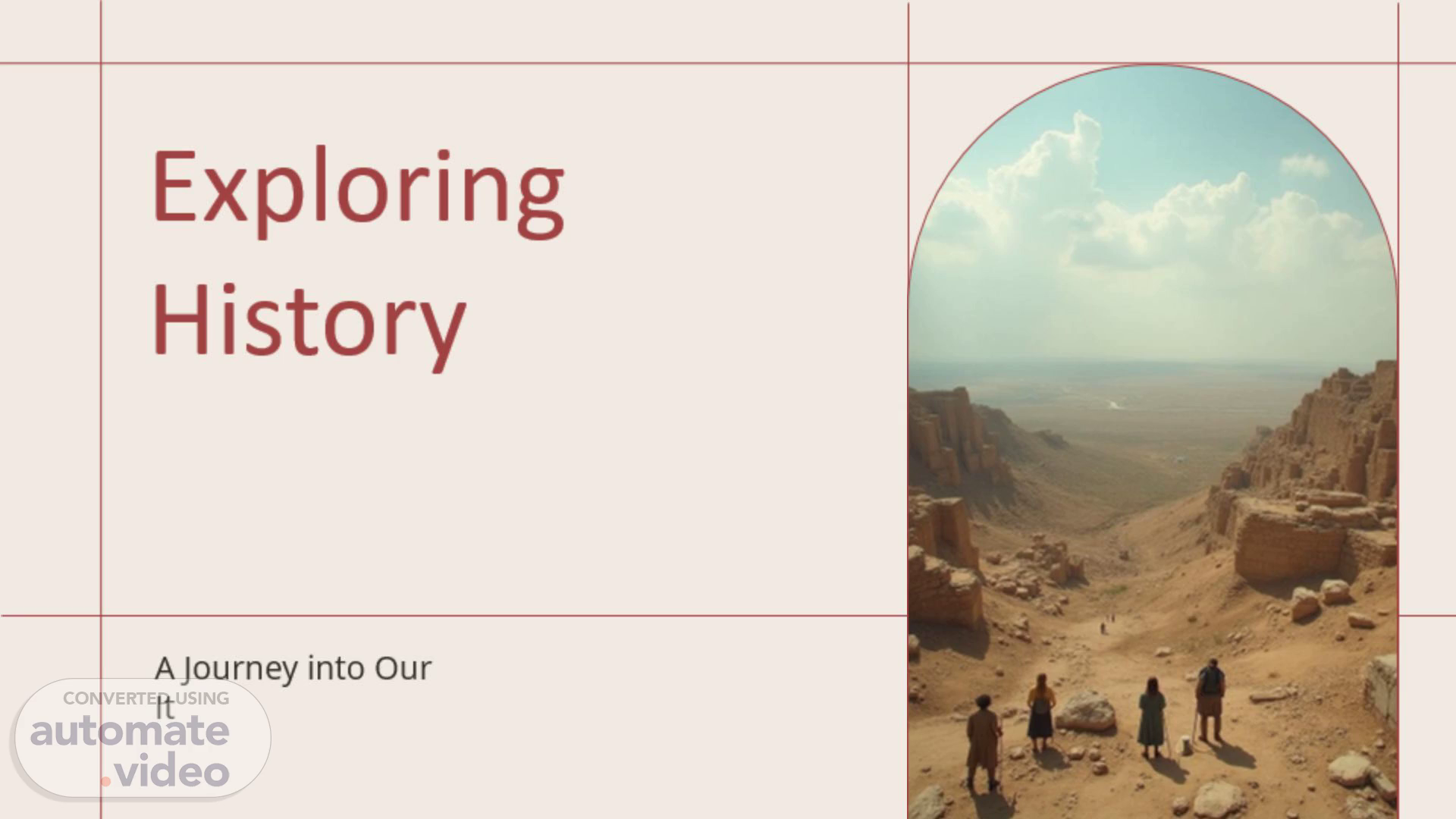Scene 1 (0s)
Exploring History. A Journey into Our Past and How We Discover It.
Scene 2 (8s)
Introduction. In this presentation, we will uncover various aspects of history, including what early people ate, their clothing, jobs, and the games they played. We'll also explore how we learn about our past and the methods historians and archaeologists use..
Scene 3 (23s)
Learning About the Past. 01.
Scene 4 (30s)
What people ate and wore. Understanding the diet and clothing of ancient people helps us connect with their daily lives. Early civilizations had a variety of diets that often included grains, fruits, vegetables, and meats, depending on the region. Clothing was made from natural materials like cotton, wool, and animal hides, designed to suit their environments and lifestyles..
Scene 5 (49s)
Jobs and games of early communities. People in ancient times had diverse jobs that contributed to their communities, from farming and building to trading and crafting. Games were also an important part of their culture, providing entertainment and social bonding. Many traditional games were not only fun but also taught essential skills for survival..
Scene 6 (1m 6s)
Rituals and beliefs followed. Rituals and beliefs were central to the lives of ancient people. They often performed ceremonies to honor their gods, celebrate seasons, or commemorate important life events. These rituals were accompanied by traditional music, dances, and offerings, reflecting the values and culture of the community. Beliefs shaped their understanding of the world and provided a moral framework for living..
Scene 7 (1m 26s)
Discovering Our Roots. 02.
Scene 8 (1m 32s)
Living near rivers and hills. Geographical features significantly influenced where early people chose to settle. Living near rivers provided essential resources like water for drinking and irrigation, while also supporting fishing. Hills and mountainous regions offered protection and strategic advantages. These natural landscapes helped shape the ways communities developed..
Scene 9 (1m 49s)
Finding fertile land for settlement. Fertile land was crucial for agriculture, allowing communities to grow crops and sustain larger populations. Ancient farmers would look for areas with rich soil, often near riverbanks or deltas. This ability to cultivate food played a vital role in the rise of civilizations, enabling them to thrive and develop culture..
Scene 10 (2m 7s)
Transport routes in ancient times. Transport routes were essential for trade, communication, and cultural exchange among communities. Rivers served as natural highways for boats, while trade routes developed over land, connecting distant settlements. The movement of goods and ideas along these routes fostered connections and collaborations, contributing to the growth of societies..
Scene 11 (2m 24s)
Conclusions. In exploring our ancient past, we gain insights into the daily lives, beliefs, and environments of early communities. Understanding where they lived and how they interacted with their surroundings allows us to appreciate the foundation upon which our modern society is built..
Scene 12 (2m 40s)
Thank you!. Do you have any questions?. +00 000 000 000.
